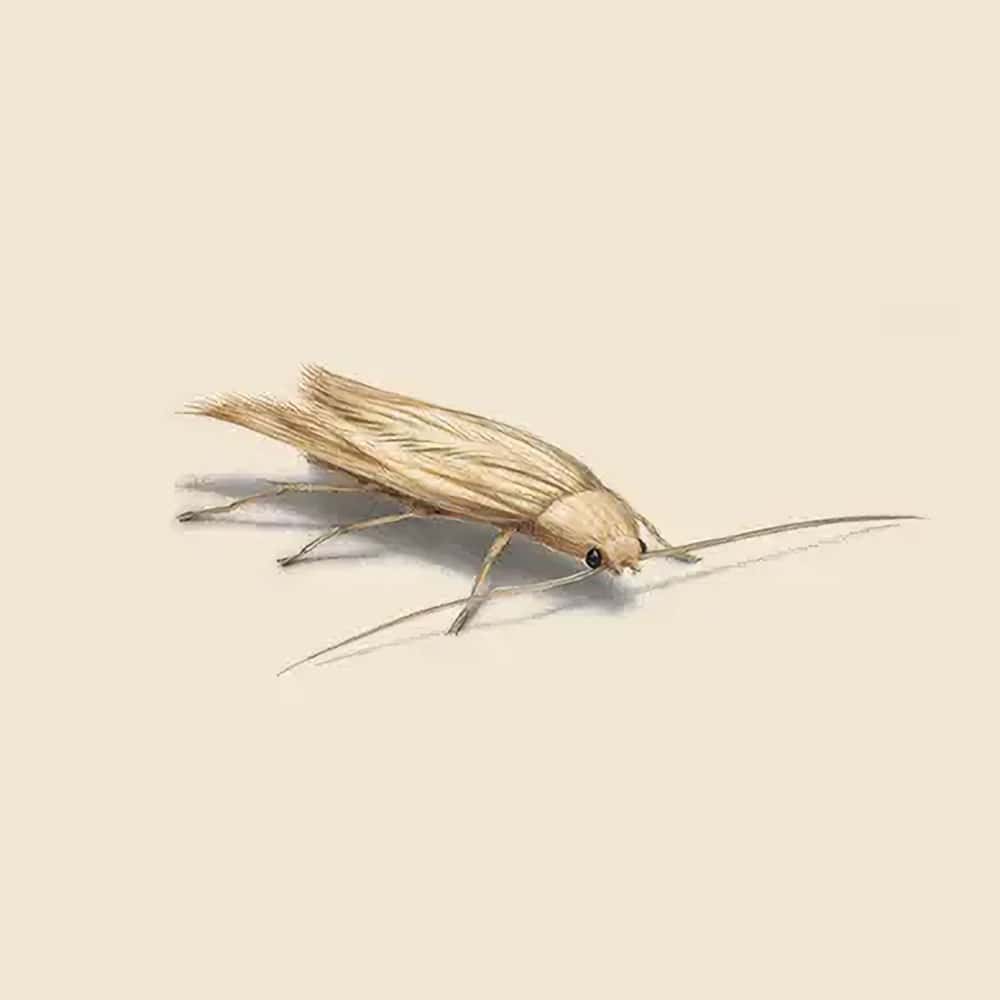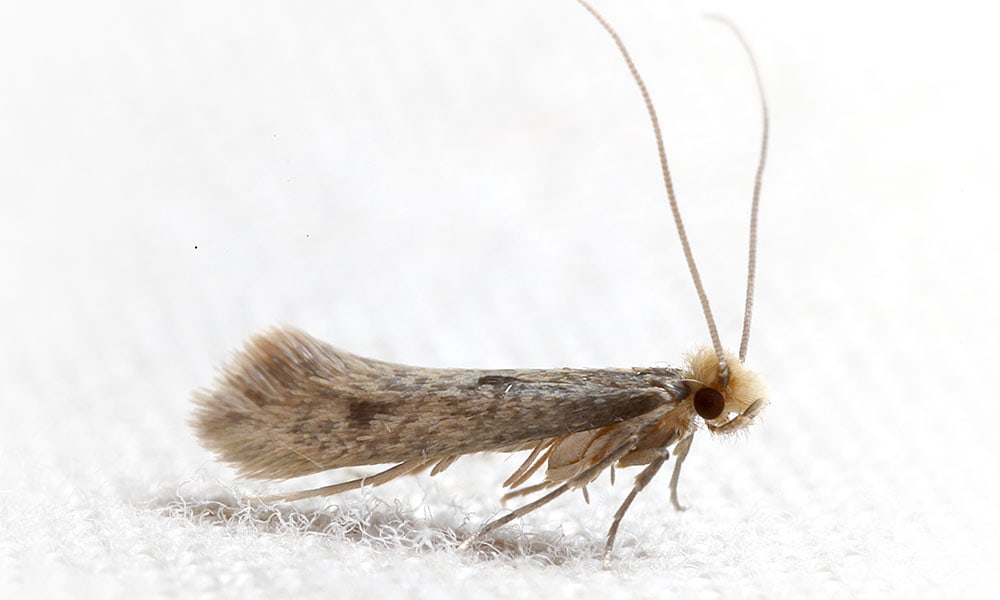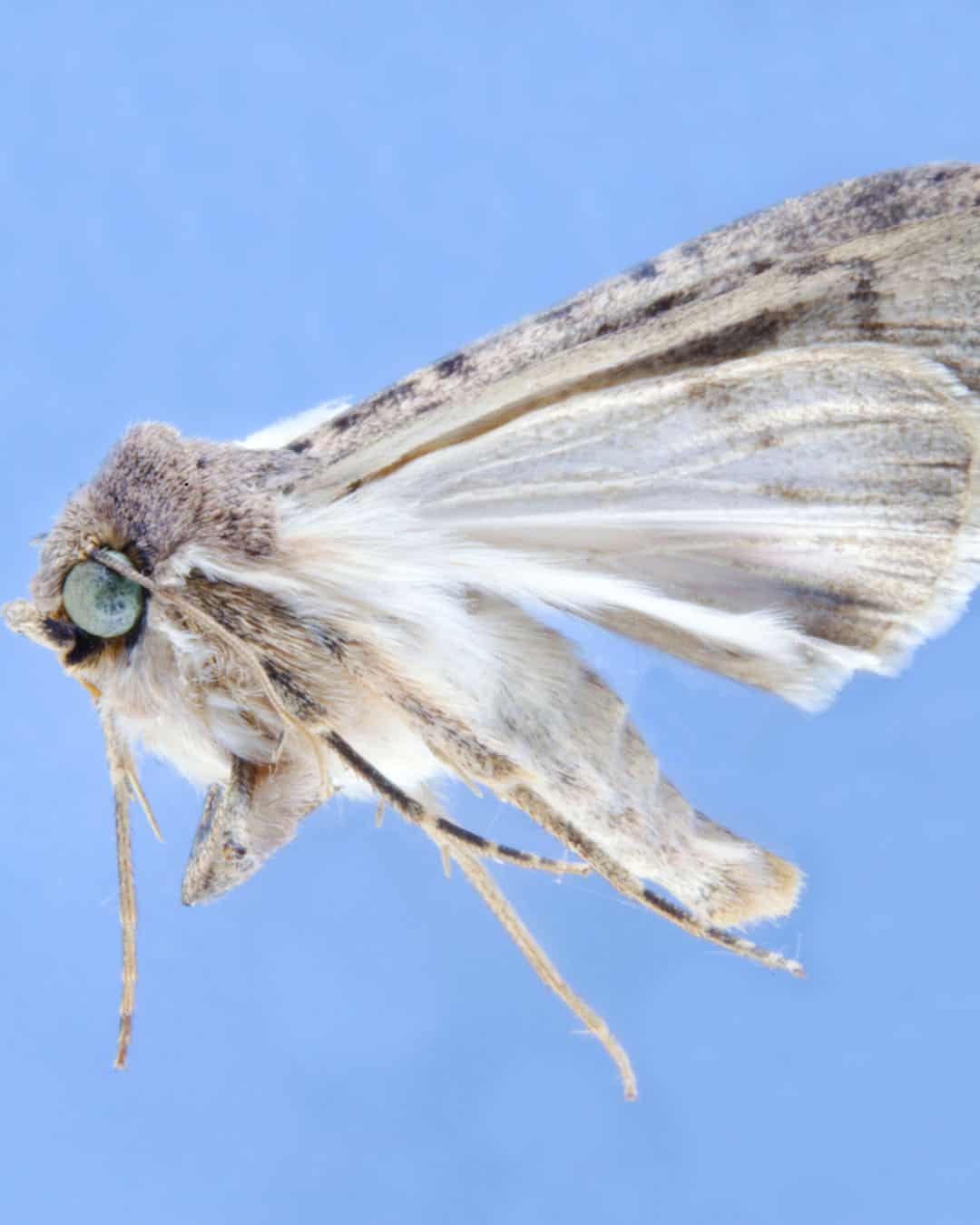Clothes Moth Facts & Information
Clothes moths, known for their larvae that feed on natural fibers, can cause significant damage to clothing, carpets, and other textiles. These pests are particularly troublesome in homes with stored or rarely used fabrics, making effective control measures essential.

Tinea Pellionella
What You Need To Know About Clothes Moths
What do clothes moths look like?
Clothes moths are small, delicate moths with a wingspan of about 1/2 inch. They are typically golden or buff-colored with reddish-golden hairs on their head. There are two common species: the webbing clothes moth (Tineola bisselliella) and the casemaking clothes moth (Tinea pellionella).
What do clothes moths eat?
Adult clothes moths do not feed, but their larvae are notorious for feeding on natural fibers. They primarily consume wool, silk, fur, feathers, and hair, as well as any fabric that contains these materials. The larvae can also feed on other organic debris like lint and dust.
What sort of habitat do clothes moths live in?
Clothes moths thrive in dark, undisturbed areas where natural fibers are stored. Common habitats include closets, attics, basements, and storage boxes. They prefer humid environments and are often found in the folds of fabrics or hidden in the seams of clothing.
How do clothes moths commonly behave?
Clothes moths are weak fliers and tend to avoid light, making them difficult to detect. The adult moths lay eggs on natural fibers, providing a food source for the larvae upon hatching. The larvae spin silken tubes or cases as they feed, causing damage to fabrics.
Did you know this about clothes moths?
Clothes moth larvae can cause significant damage to garments and textiles by feeding on the keratin found in natural fibers. They can go unnoticed until the damage becomes extensive. Interestingly, the casemaking clothes moth larvae create portable cases from silk and fabric fibers, which they carry with them as they feed. Regular cleaning and storage of clothes in airtight containers can help prevent infestations. Additionally, freezing infested items can kill clothes moths and their larvae.
Understanding Clothes Moth Infestations
Understanding clothes moth infestations is crucial for effective management. Clothes moth larvae prefer dark, undisturbed areas where they can feed on wool, silk, fur, and other animal-based materials. Infestations often go unnoticed until significant damage has occurred. Adult moths are small and typically avoid light, making them less noticeable than other household pests.

How Hearts Handles Clothes Moth Treatment
Hearts Pest Management employs an integrated pest management approach to handle clothes moth infestations. Our process begins with a thorough inspection to identify infested areas, assess the extent of damage, and locate potential sources of infestation. We then develop a customized treatment plan that may include deep cleaning, targeted insecticide application, and the use of pheromone traps to disrupt mating cycles.
Clothes Moth Inspection
Clothes Moth Treatment
Clothes Moth Prevention
Educational Resources

Think You Might Have a Clothes Moth Infestation?
At Hearts Pest Control, we understand the challenges associated with Clothes Moth infestations and are here to provide professional solutions tailored to your needs. Flourishing in warm and humid climates, they are prevalent in many regions, including San Diego County, Orange County, and Los Angeles County.